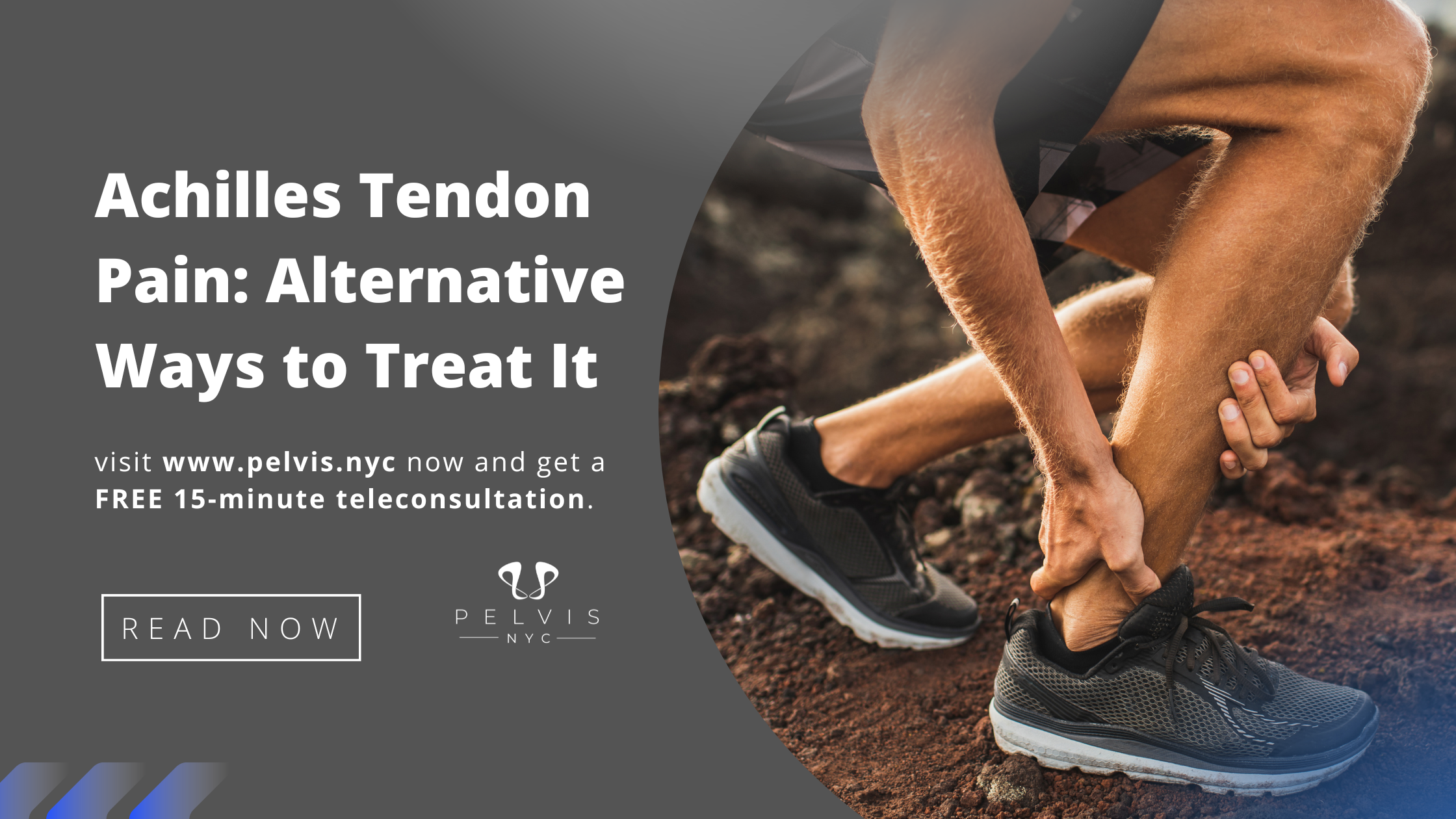Anyone who’s ever done a lot of running, jumping, or even just walking on uneven surfaces has probably experienced Achilles tendon pain at one time or another, often due to conditions like Achilles tendinitis. It can affect the activities you love and your daily routine. If you are wondering about the fastest alternative way to treat Achilles tendon pain, stay tuned to our page! Achilles tendon injuries are often treated with RICER treatment, and prescription of anti-inflammatory medicines, and sometimes can be managed without surgery.
Definition
The Achilles tendon is one of the most important and strongest tendons in the human body. The Achilles tendon connects your calf muscles to your heel bone and plays an essential role in helping you walk, jump, and run.
Two types of Achilles tendon injuries cause pain:
- Achilles tendonitis: A condition that occurs when the Achilles tendon becomes inflamed.
- Achilles rupture: A complete or partial tear of the Achilles tendon.
What Causes Achilles Tendon Pain?
Since the Achilles tendon can withstand a lot of force, its strength comes at a price. It is one of the most commonly injured tendons in the body, especially when it becomes inflamed and swollen.
Tight calf muscles can also contribute to increased stress on the Achilles tendon, leading to pain and inflammation.
Overuse
Repeated stress on the Achilles tendon can cause irritation and inflammation. This is often seen in sports that require running and jumping, such as basketball and soccer. Overuse can also occur in activities like tennis that put a strain on your ankles and feet.
Overuse can lead to noninsertional Achilles tendinitis, where the fibers in the middle portion of the tendon become swollen and thickened.
Sudden Force
A fall or direct blow to the Achilles tendon can cause it to tear (rupture), leading to Achilles tendon ruptures. This usually happens in sports such as football or track, where there is a lot of running and sudden stopping.
Inflammation
Tendinitis is an inflammation of the Achilles tendon resulting from overuse or injury. Symptoms include pain and swelling around the heel bone. Treatment typically involves rest, ice, and physical therapy. Surgery may be needed if tendinitis does not respond to these treatments. Insertional Achilles tendinitis affects the lower portion of the tendon where it attaches to the heel bone and can involve bone spurs and calcification.
Achilles Tendon Injuries
Achilles tendons can suffer from a range of injuries, from mild strains to severe tears. Here’s a closer look at two common types:
Achilles Tendonitis
Achilles tendonitis involves inflammation due to overuse. Symptoms include pain and swelling near the heel. Treatment includes rest, ice, and physical therapy, and sometimes surgery if conservative methods fail. In cases where conservative treatments fail, Achilles tendinitis surgery, such as tendon debridement, may be necessary to alleviate pain and restore function.
Achilles Tendon Rupture
An Achilles tendon rupture is a complete or partial tear, often caused by a sudden force or severe overstretching. Surgery is typically required to repair the tear, followed by extensive physical therapy to regain strength and function. Achilles tendinitis surgery, including procedures like tendon debridement and gastrocnemius recession, also plays a crucial role in treating severe injuries, with physical therapy being essential for recovery.
Achilles Tendon Treatment
Achilles tendon injuries treated range from conservative measures like the RICER treatment (Rest, Ice, Compression, Elevation, and Referral) and prescription of anti-inflammatory medicines to the possibility of treatment without surgery. For milder injuries, rest, ice, and immobilization in a boot or splint may be sufficient. More severe injuries may require complete rest followed by physical therapy to stretch and strengthen the muscles around the tendon. Strengthening the calf muscle is particularly important as it can help protect the Achilles tendon from further injury.
In some cases, surgery is necessary to repair the tendon. The type of surgery depends on the extent of the injury, but it usually involves making an incision in the back of the leg and reattaching the tendon to the heel bone. Recovery from surgery can take several months, but most patients return to normal activity levels eventually.
Physical Therapy for Achilles Tendon Injury
Physical therapy is one of the most effective alternative ways to treat an Achilles tendon injury. It involves exercises and techniques that help speed up the healing process. Physical therapy improves flexibility and range of motion, while specific exercises lengthen and strengthen the tendon. A combination of both is often the most successful approach to rehabilitation following an Achilles tendon injury.
Starting physical therapy as soon as possible after the injury maximizes the chances of a successful recovery. Delaying treatment can result in the tendon becoming stiff and difficult to stretch.
Where to Ask for Help?
At Pelvis NYC, our physiotherapist Dr. Adam Gvili tailors programs specifically designed to your needs. Many patients with orthopedic problems have recovered under his care.
For more inquiries, visit Pelvis NYC, and you can get a FREE 15-minute teleconsultation if you book now.


